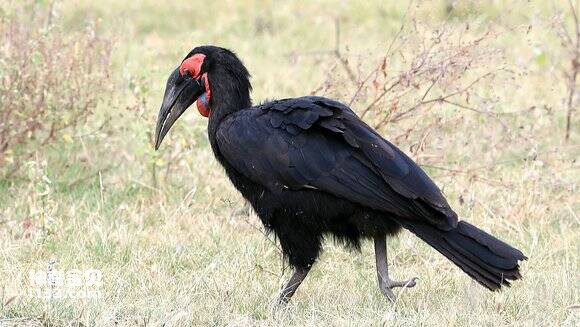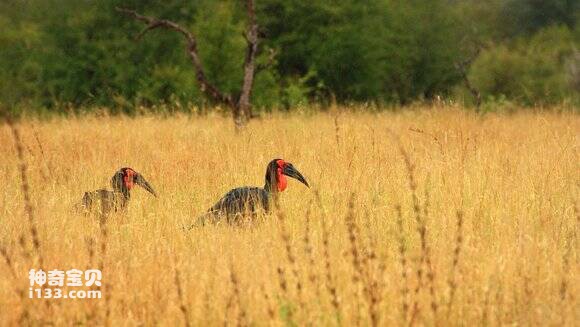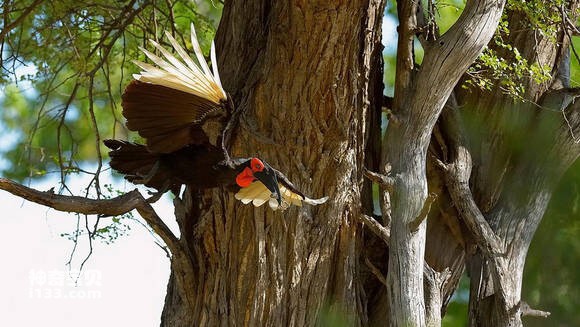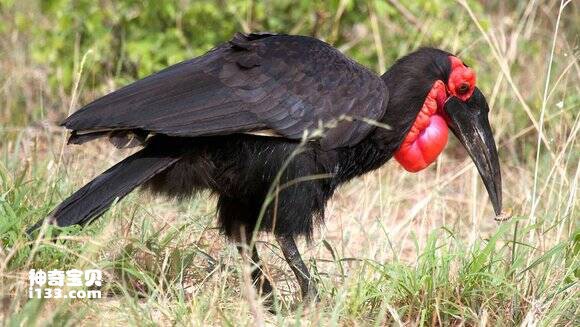Bucorvus leadbeateri
IUCN
LCBasic Information
Scientific classification
- name:Bucorvus leadbeateri
- Scientific Name:Bucorvus leadbeateri,Southern ground hornbill
- Outline:Climbing birds
- Family:
Vital signs
- length:127 cm or so
- Weight:About 6.2kg
- lifetime:70 years or so
Feature
Face, larynx and laryngeal sac, exposed skin is vermilion, the rest are black
Distribution and Habitat
The Southern ground hornbill is found in southeastern Africa, ranging from Kenya to South Africa.
Appearance
With a total length of 127cm, the southern ground hornbill is the largest bird in the hornbill family. The whole body is black, and the beak and feet are also black. Face, throat and laryngeal sac, exposed skin is vermilion.
Southern ground hornbills usually live in savanna.
Details
Bucorvus leadbeateri, Southern ground hornbill, is one of the most important scavengers of scavengers.

Unlike other hornbills that live in trees, the southern ground hornbill does not have large wings, but it has a pair of strong legs and feet. They live mainly on the ground, hunting insects, worms and small reptiles in small groups on the ground, and only roosting in trees at night. They are very cautious and timid, and have "helpers" in the group to help breeding mates build nests in holes in trees lined with dry leaves.
The southern ground hornbill has very little courage and is completely out of proportion to its height and weight. Because of the food relationship, they are mainly active on the ground during the day, generally hunting on the ground in small groups of families, and sleeping in trees at night.

Southern ground hornbill because of its height and weight factors, the flight speed is not fast, the flight distance is not too far. In general, you don't like to fly.

The southern ground hornbill population has been declining, and it is classified as "vulnerable" by the IUCN and "endangered" in South Africa, Lesotho, Namibia and Eswatini.
Protect wild animals and eliminate wild meat.
Maintaining ecological balance is everyone's responsibility!








